Stransky’s
Stransky’s Recreation was located at 1209 West 7th Street in St. Paul. This page will cover all of its entertainment iterations, including:
- Trabert’s Place
- Stransky’s Bar/Rec
- Highland Rec/West Seventh Street Rec
- Cooper’s West
TRABERT’S PLACE
The building was originally Trabert’s Place. Bob Furnow provided me with an article that Jim Landsberger published about the history of the place in the West 7th Street Reporter. Landsberger wrote:
Frank J. Trabert was born in 1860 in Holstein, Germany. He immigrated in 1884 with his wife, Minnie. He opened his saloon in 1903 with his son Theodore as bartender, and he had a boarder, Carl Seifert as “porter.” After her husband died, Minnie continued to take in borders at 641 Lee Avenue. Her son became a hotel clerk in 1920 [The saloon had succumbed to Prohibition.]
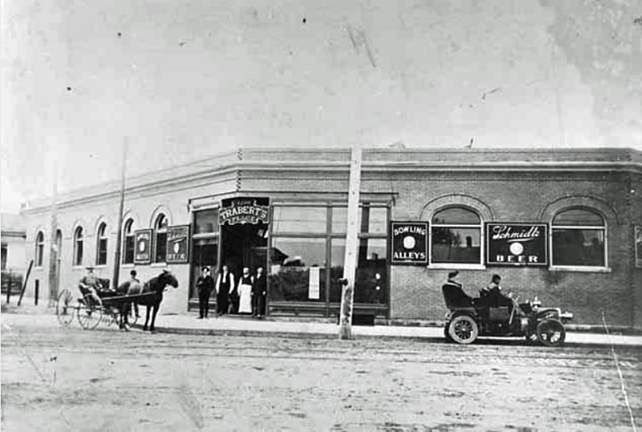
1909 Photo courtesy Minnesota Historical Society
STRANSKY’S RECREATION
Landsberger:
Next to acquire the saloon was Louis Stransky in 1933 (the end of Prohibition), and he eventually changed the name to Stransky’s Recreation. Louis Stransky emigrated from Bohemia in 1883 with his parents. His wife, Lillie, was born in Minnesota to Bohemian parents.
A Joseph Stransky, Jr. appears in print in February 1936.
The building held an 8-lane bowling alley as well as a night club.
In 1940 the Al Kolech Orchestra provided musical entertainment.
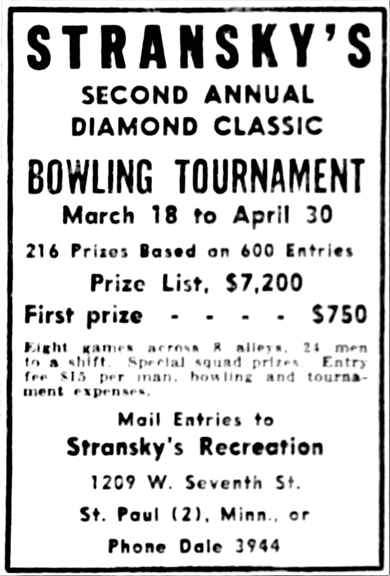
Strib, March 12, 1944
In April 1944 there was a reference to Joseph Stransky’s Tavern, where a woman from Kansas City got mixed up with a military deserter only to get her purse stolen.
In March 1945, Joe Stransky Jr. and his bartender were each fined $100 for selling liquor on a Sunday. Called a “flagrant violator who has never paid attention to laws and regulation,” Stransky had his bar license revoked the following month. He reapplied for the license, but over 300 members of the Fairmount Ave. Methodist Church signed a petition objecting to the action. Stransky had really cheesed off the clergy, as the Methodist Ministers Association of St. Paul and the St. Paul Ministers’ Association also registered their opposition to reissuing the permit. Despite these protests, the council (with the Mayor breaking a tie) voted to reinstate the liquor and restaurant license after a 30-day suspension, as per protocol.
According to Landsberger, Al Danneker opened a cafe in the building in 1947.
In 1948 there was the After Dark Room, with music by Jack White.
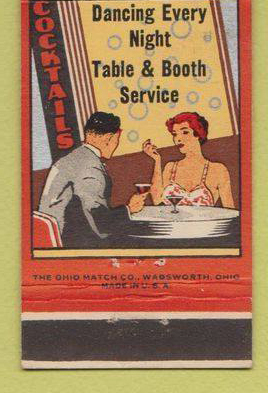
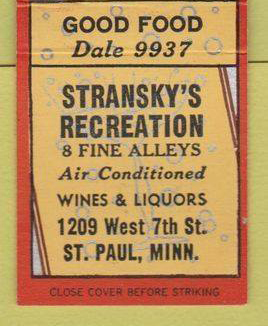
In 1950, Augie Garcia was a regular at Stransky’s, as indicated by these photos from the Minnesota Historical Society.
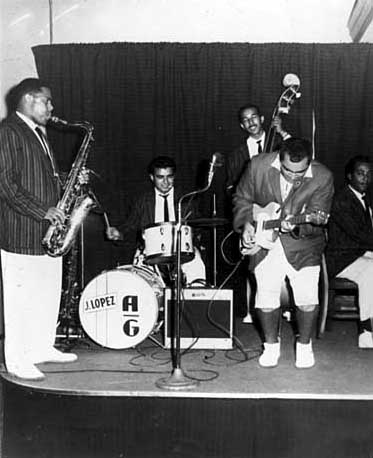
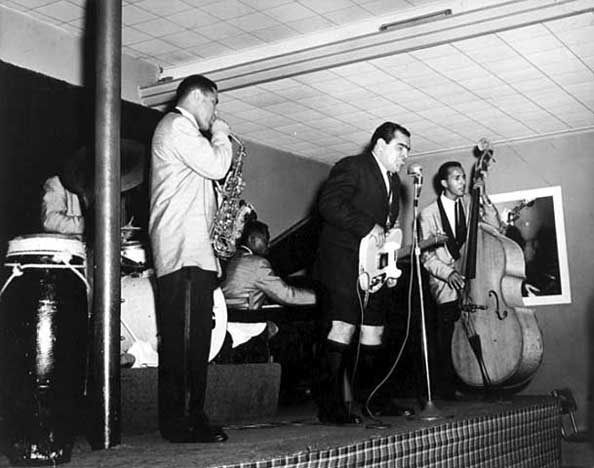
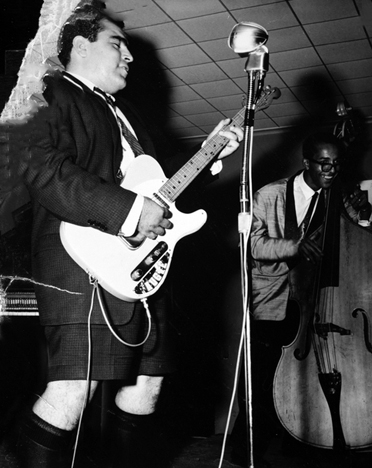
In April 1951, Ginny Sims appeared in the After Dark Room with Jack White’s band.
WEST SEVENTH STREET REC/HIGHLAND REC
In July 1951 Joe Stransky apparently sold the property to Clayt Brenner. Brenner expanded the bowling area and eliminated the tavern, according to the St. Paul Musician magazine. The property was renamed West Seventh Street Rec., also known as Highland Rec. Bob Furnow says: “I don’t know why they called it the Highland Rec because Highland Park is about mile or two down 7th, but a lot people still called it Stransky’s & Highland Rec for years after. I remember people still calling it that way after it wasn’t those names anymore.”
In November 1953, jazzman Harry Blons appeared with vocalist Joann Dale. The show was hosted by Bill Larson, Jr.
Later, Highland Rec became a home base for Augie Garcia, the Godfather of Twin Cities Rock ‘n’ Roll. St. Paul Musician magazine cites him there in June 1955, November 1956 (on Tuesday nights), and in 1958.
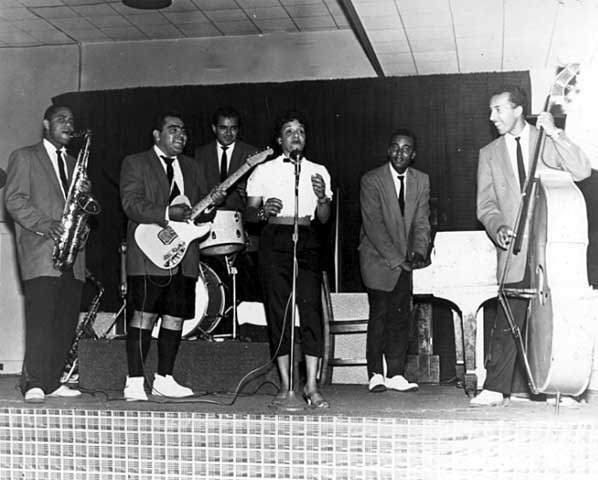
Augie Garcia and his band, 1955; photo courtesy Minnesota Historical Society
Bob Fernow:
I grew up on Watson Ave., a block and a half from the West Seventh Street Rec. It was a Bar/Bowling Alley/Café. They used to broadcast “Jackpot Bowling” from there on TV on Sunday nights and a lot of my friends used to set pins there.
It had the main bar in the front on the corner of West 7th Street, Tuscarora, and View Street. The door on West 7th went into the front main bar, then a wide door to the interior where the café was, and in the middle of the building before you got to the bowling alley was the lounge area where bands played.
I don’t remember the years exactly, but when I was a kid in the fifties/early sixties there was a huge picture of Augie Garcia that everyone knows, the one playing his Telecaster and wearing his Bermuda Shorts on the side of the building. It was up there for years even after he didn’t play there anymore, that I knew of anyway, since I was just a kid. I remember my aunt who lived pretty much across the street on Tuscarora Ave. telling me how popular Augie was and that when Augie played there, people were lined up around the block waiting to get in.
According to Landsberger, Al Danneker’s Cafe became Marge’s Cafe in 1967.
Bob Fernow:
The middle bar/Lounge area where Augie played wasn’t being used at all when I was old enough to get in there around 1970. It was a pretty big area with a good sized stage. It looked like a forties/fifties era small nightclub. From what people tell me, he played there quite a bit after the River Road Club burned down. Over they years they would have music acts occasionally but no one big like Augie and not as a regular thing.
The name of the bar was actually the W 7th Bowl when Mel Lipshultz sold it to Marv Cooper in 1970. Maybe they named it W 7th Bowl because it sounded a little more classy and because it was on TV a lot with the bowling show on Sunday nights. They had eight lanes and it was a nice place.
COOPER’S WEST
Bob Furnow:
After a mysterious fire, Cooper took the insurance and tore out the bowling alley and middle lounge and remodeled and made a night club in the middle area and changed the name to Coopers West, a name that we suggested to him because of the Fillmore East and West, we told him it would be cool to call it Coopers West.
Everyone always still called it the Rec even after Cooper had it. I remember that because after the fire – when people would call there, mostly wives calling to find out if their husbands were in there – every married guy in the bar would holler out “I’m Not Here” and Mac the bartender would answer the phone with “W 7th Bar” because the bowling alleys were gone and burnt down.
Cooper wanted a classy nightclub and he wanted a better, more respectable clientele than us (he called us drunken grubby hippies), but that was where he made all his money. Everybody in the neighborhood hung out there. It was the hottest bar on W 7th for a long time, and there’s a lot of bars on W 7th. It was basically a corner working man’s bar and he made a ton of money from everybody stopping in after work and beyond.
Cooper started booking country acts – Marvin Rainwater and Texas Bill Strength opened the club in July 1971, and Strength did some live radio broadcasts there, when he was a DJ for KTCR. A few national country acts like Webb Pierce also came through. Country didn’t work too well and he started booking rock bands and he cleaned up. He had some big local bands play there like Copperhead, they always packed the place. The rumor was he was gonna book Gypsy for New Years Eve and it was going to cost him $3 grand but it never happened.
He also had the Chancellors play there, and back then all the local Recs had talent night contests on different nights of the week and the Chancellors were the backing band for a while. There was group of people that would hit all the other bars’ talent nights. Sorta like Karaoke is now. My big claim to fame was I sat in with the Chancellors and jammed with them twice and won twice. First prize was ten bucks, not too bad for 1971, when a 12 ounce tap beer was a quarter and I think a drink was 35 cents. The Chancellors at that time only had one or two original members and they had a girl singer. Dan Holm, the bass player, switched to lead guitar, and I played his Telecaster.
The bar as Coopers West was only there until 1971 or ’72 and then it folded. Cooper was a bad businessman and got into too much debt. It was too bad because it was the coolest bar on West 7th, for a while anyway.
WEST 7TH HARLEY DAVIDSON
Landsberger:
West 7th Harley-Davidson moved into 1209 in the early 1970s and played a significant role in the Minnesota Motorcycling community. When motorcycles were starting to grow in popularity, Howard W. Belmont became passionate about the developing sport at a young age, and in 1939, Howard’s mother took out a mortgage on their home to set up show at 277 West 7th near downtown St. Paul. The site quickly became a community landmark, as well as the premier biker resource. They incorporated in 1945. The business thrived through the 1950s and ’60s, and in the early 1970s it moved to 1209. In 1981 Belmont retired and sold the business, which relocated off Highway 94 in Oakdale.
STRANSKY’S TODAY
The building has gone through a number of auto parts stores. As of 2020, it is part of the O’Reilly chain. This Google image shows the unusual shape of the building – basically a rectangle with a corner cut off for 7th Street.
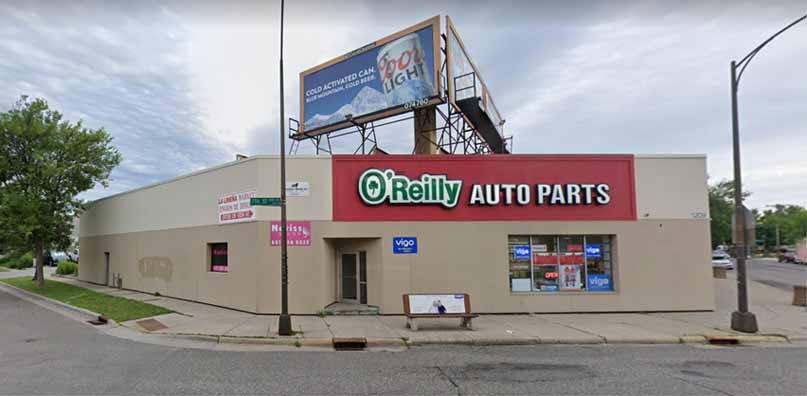
Thanks to Bob Furnow for all his help on this history!
